A fisherman from South Africa encountered a frightening parasite that became part of a live fish
Categories: Animals
By Pictolic https://pictolic.com/article/a-fisherman-from-south-africa-encountered-a-frightening-parasite-that-became-part-of-a-live-fish.htmlThere are many parasites in nature that live at the expense of other creatures, but none of them have adapted to their role as well as Cymothoa exigua. This miniature crustacean is called a "tongue-eating woodlouse" and it actually robs its host of the tongue and takes its place, fully performing the functions of this organ.
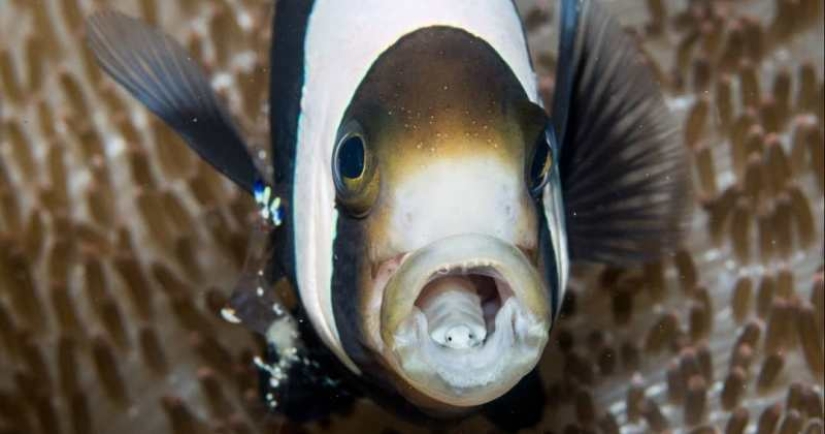
Recently, 27-year-old Don Marx from Cape Town caught a 2.7-kilogram carpenter fish off Cape Agulhas – the southernmost point of Africa, where the Atlantic and Indian Oceans meet. The man is fond of marine biology, so he always carefully examines his catch.
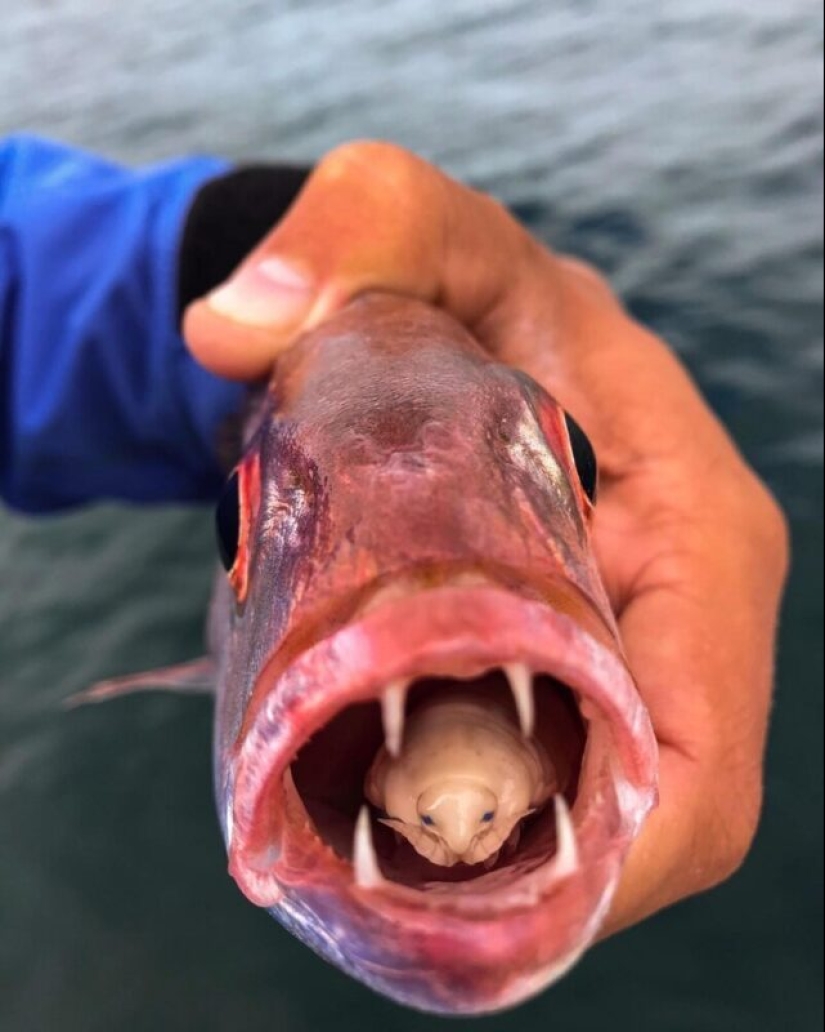
To his surprise and horror, a ghastly pale creature with blue eyes that he had never seen before peered out of the fish's mouth at Don. The angler realized that he was dealing with something unusual and sent a photo of the fish mouth to Nico Smit, a zoologist at Northwestern University.
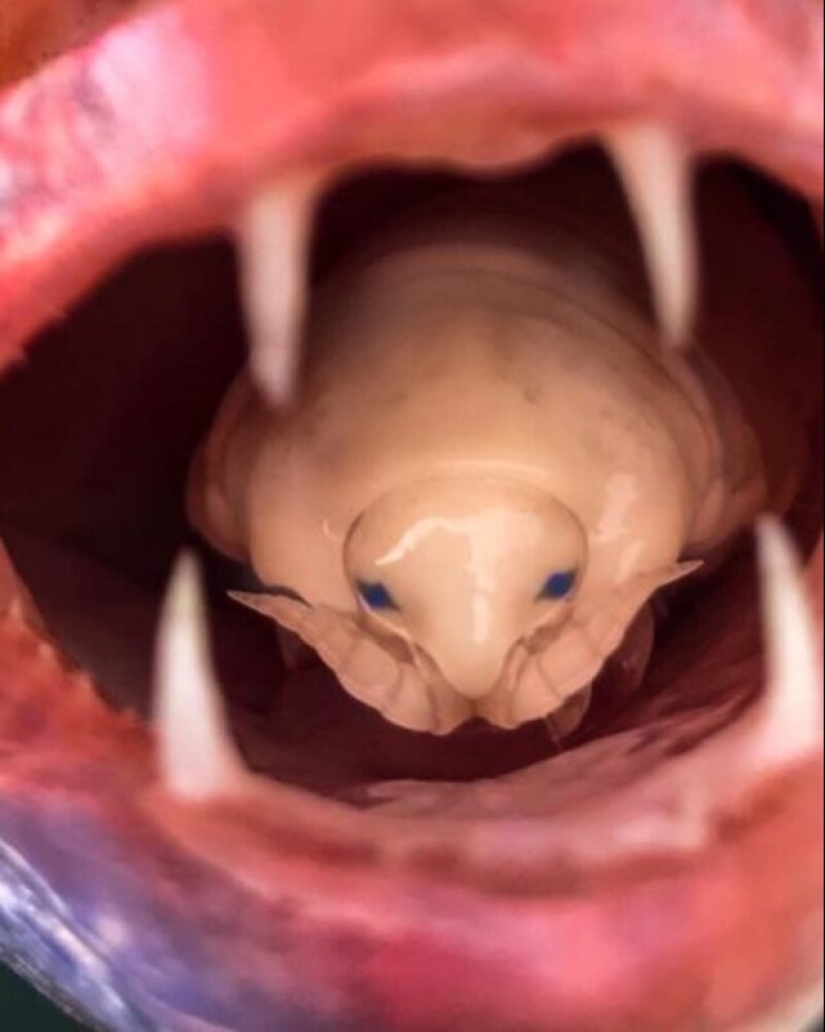
The scientist quickly identified the creature as Cymothoa exigua and told Marx that he was lucky. Prior to this, tongue woodlice had not fallen into the hands of ichthyologists at the southern tip of the Black Continent, and this catch can be considered a small but important discovery.
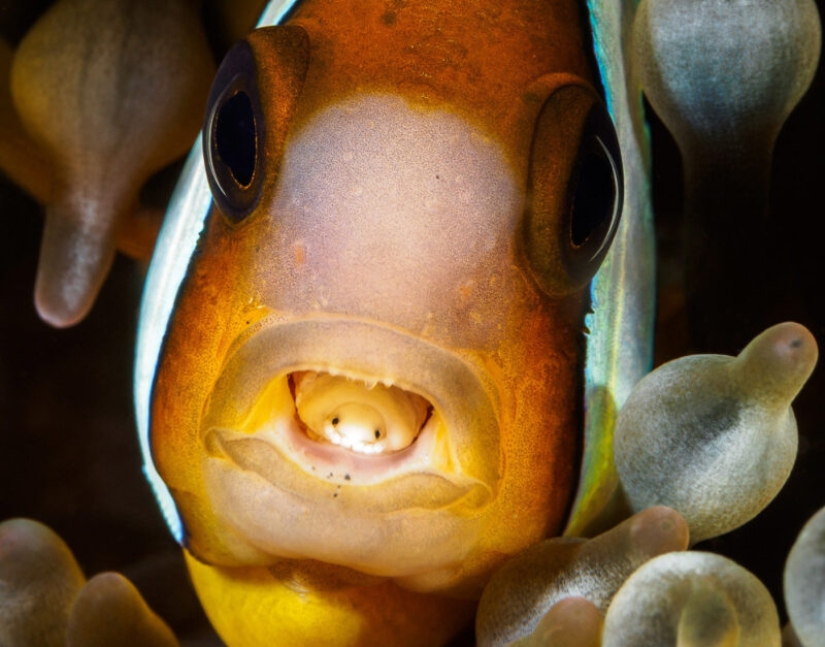
Fortunately, this terrible parasite is not dangerous to humans and lives exclusively in the mouth of fish, preferring the spotted pink snapper (Lutjanus guttatus), which lives in all the oceans of the planet, except the Arctic. But in the absence of a "favorite" species, the crustacean can choose other fish as its host.
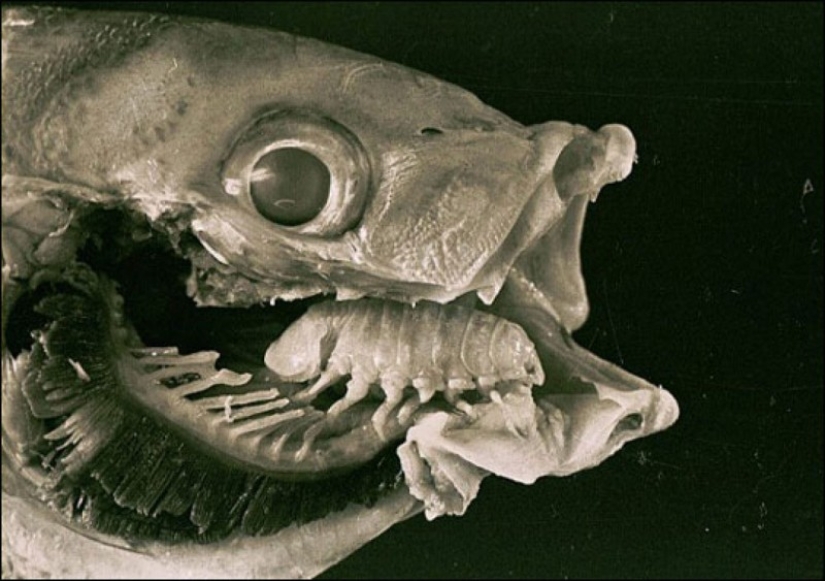
The parasite enters the mouth of the fish through the gills and attaches its prehensile legs to the base of the tongue. The crustacean begins to actively suck blood from the organ, depriving it of normal nutrition, which is why the tongue very soon atrophies. After that, the woodlouse is fixed on the stump of the tongue and takes its place.
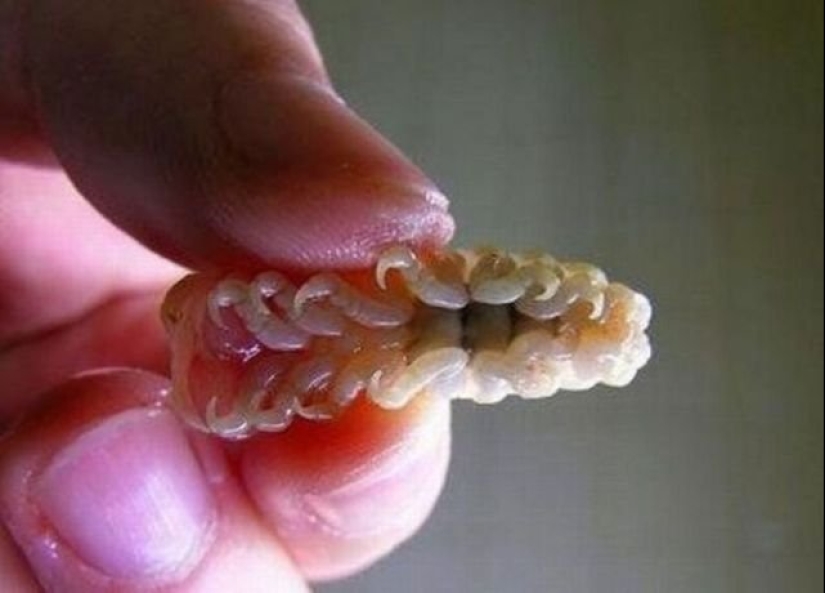
In the mouth of the fish, the parasite feeds on blood from the vessels that feed the remnants of the tongue muscles and mucus. Instead, the arthropod fully performs all the functions of the destroyed organ and tries not to interfere with its owner. Scientists have determined that Cymothoa exigua almost never kills its host, as it threatens death and the parasite.
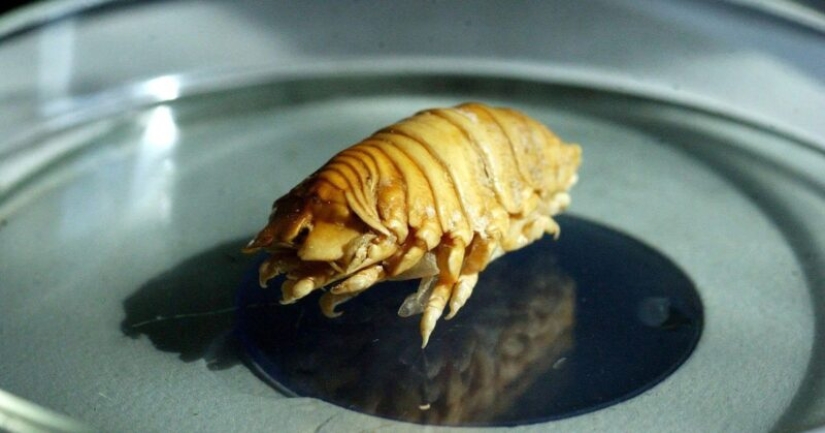
When studying fish affected by woodlice, ichthyologists determined that they are slightly behind in weight and size from their healthy relatives, but generally feel good. Only the presence of two or more parasites in one individual can be deadly, as they will consume too many nutrients from the blood of the victim and at the same time, in the process of growth, will block the fish's throat.
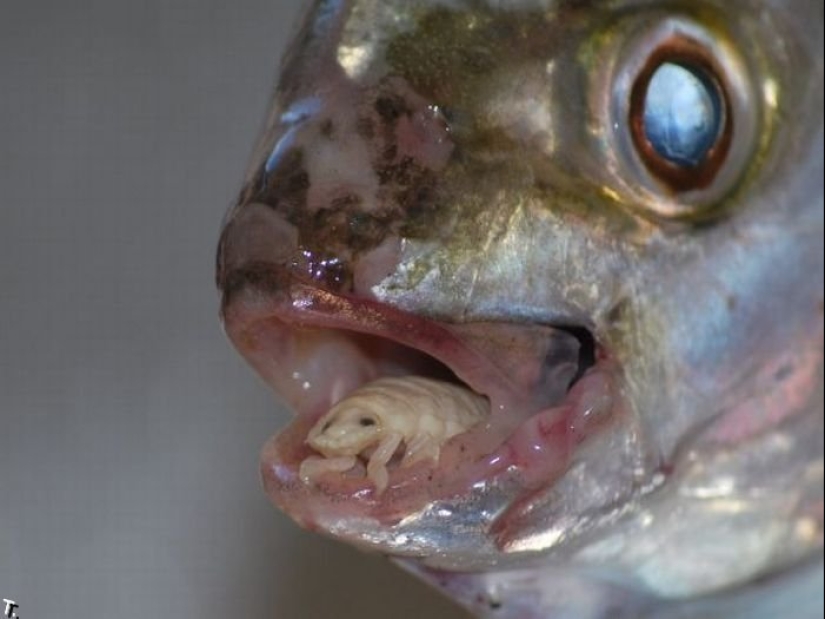
Interestingly, all the tongue woodlice prowling in the water column in search of a host are males. Only after finding a host and firmly occupying a place in his mouth, the parasites turn into females and are able to reproduce. For fertilization of the female, a free-floating male woodlouse is needed. If it gets into the mouth of the fish, then conception will occur, and if not – then the parasite will not leave offspring.
Most often, Cymothoa exigua is found in the warm waters of the Pacific Ocean off the coasts of California and Mexico, but occasionally fish with a parasite in their mouths fall into the nets of fishermen even off the coasts of France and Great Britain. Judging by the fact that Don Marks caught a fish with a parasite off the coast of South Africa, the habitat of the tongue woodlouse is steadily expanding.
Keywords: Animals | Ocean | Fish | Blood | Tongue | Parasites | Monsters | Mouth
Post News ArticleRecent articles

The celebrities we are used to seeing on the screen or in history textbooks, outside of all this hype around, are ordinary people. ...

At the beginning of their career, many actors grab any role – just to light up on the screen. And then, years later, when they ...
Related articles

Pets are full-fledged family members for many owners, whom they take with them on different trips. But a Frenchman named Remy went ...

To photograph animals nice and interesting — at least, so say the spectators, who admire the images of animals on the ...

Man is accustomed to consider himself the most intelligent being on Earth. Despite his very weak physical abilities, he manages the ...

Arabic writing is very different from Cyrillic and Latin. And this difference is not only in the form of the letters themselves. In ...